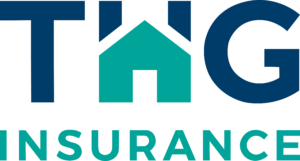Sailboat insurance requirements in North Carolina can be confusing. There’s no statewide mandate, but that doesn’t mean you’re off the hook. From marinas to lenders, many situations still demand proof of coverage—and knowing what’s required (and what’s smart) can save you from costly surprises.
Your insurance agent at The Huneycutt Group, is here to help you navigate the ins and outs of sailboat insurance requirements so you can protect your investment, avoid unexpected costs, and sail with confidence. If you’re looking for guidance or a boat insurance quote, we’re here to help.
Key Takeaways:
- While yacht insurance and sailboat insurance aren’t legally required in North Carolina, marinas, lenders, and clubs often require it.
- Boat insurance can cover liability, hull damage, medical payments, fuel spills, and more—protecting you from major out-of-pocket costs.
- The right policy depends on your boat, how you use it, and where you sail—working with a knowledgeable agent makes all the difference.
1. Is Sailboat Insurance a Legal Requirement in North Carolina?
Here’s the short answer: North Carolina does not require sailboat insurance by law. However, that doesn’t mean you won’t need it.
Many marinas, boat storage facilities, and private docks require proof of insurance coverage—especially liability coverage. If you’re financing your boat through a lender, they will almost certainly require a policy to protect their interest.
Even if your boat is fully paid off and you dock from your own backyard, having the right insurance coverage can save you thousands in the event of a boating accident, property damage, or legal claims.
2. What Does Sailboat Insurance Typically Cover?
A standard boat insurance policy should fit your vessel and lifestyle, but here are the core types of boat insurance coverage:
- Liability insurance: Covers bodily injury and property damage to others.
- Hull coverage: Pays for physical damage to your sailboat from collisions, weather, fire, theft, etc. Boat insurance can cover your hull on either an actual cash value or agreed value basis.
- Medical payments: Covers medical expenses for you and your passengers.
- Wreck removal & emergency assistance: Helps with clean-up and towing if something goes wrong on the water.
- Personal effects and boat’s equipment: Protects onboard gear and valuables.
- Legal expenses: Covers legal defense and settlements related to covered events.
- Fuel spillage: Covers cleanup costs and liability if your boat accidentally leaks fuel into the water, helping you avoid environmental fines under federal and maritime law.
You’ll also choose between actual cash value (depreciated value at the time of loss) or agreed value coverage (a set value you and the insurer agree on upfront).
3. How Much Does Sailboat Insurance Cost?
Sailboat insurance costs vary widely based on many factors. For example, insuring a modest daysailer may cost a few hundred dollars per year. A larger sailboat with extensive cruising range or high performance boats could run into the thousands. Opting for agreed value coverage usually results in higher premiums, but better protection.
- Boat age, type, and value of your boat
- Sailing area (coastal vs. inland, U.S. vs. international waters)
- Your experience as a boater
- Installed safety equipment
- Selected coverage options and liability limits
- Any additional coverage
4. Who Might Require You to Have Sailboat Insurance?
Even if the state doesn’t require it, plenty of organizations do.
- Marinas and dock operators: Many require proof of liability insurance before granting slip access.
- Lenders: If you financed your sailboat, your lender will require insurance coverage to protect the loan.
- Sailing clubs and regattas: May require liability coverage for participation.
- Charter companies: Often need boat insurance that extends to non-owners.
5. What Happens If You Skip Insurance?
Sailing without insurance may seem like a way to avoid paying premiums—but it’s risky. Without boat coverage, you’re personally responsible for:
- Medical costs if someone gets hurt
- Wreck removal and clean-up if you crash or sink
- Replacing stolen or damaged personal effects
- Defending yourself against legal claims
- Paying for damage to others’ boats or property
- Covering the cost of repairs or replacement yourself if you’re hit by an uninsured boater
If your boat is a valuable asset and not easily replaced, going without insurance isn’t worth the gamble.
6. How Do You Find the Right Insurance Policy for Your Sailboat?
Start by working with a reputable insurance provider or independent insurance broker—like The Huneycutt Group.
We’ll help you:
- Compare boat insurance policies from top-rated insurance companies
- Understand coverage options, deductible, liability limits, and extra protection
- Provide coverage options that fit your sailing habits, cruising area, and type of boat
Whether you’re insuring a new sailboat or shopping around for better premium rates, we’ll help you protect your investment and get the best coverage for your needs.
7. What Are the Different Types of Boat Insurance Policies?
Looking for the right coverage for your vessel can be overwhelming. Here’s a quick breakdown of common policies you might hear about:
- Sailboat insurance: Designed for non-motorized or wind-powered boats.
- Yacht insurance: Typically for boats over 26 feet, with extended yacht coverage for international waters.
- Personal watercraft: Covers Jet Skis and similar vessels.
- Hull insurance: Focuses on the boat’s physical structure.
- Liability insurance: Focuses on damage/injury you cause others.
Each policy varies based on factors like cruising area, storage method, how the boat is used (personal or charter), and the value of your boat.
8. How Do I Get a Boat Insurance Quote?
Getting a boat insurance quote is easy with the right insurance agent. At The Huneycutt Group, we make the process straightforward:
- Tell us about your boat (make, model, year, equipment).
- Let us know where and how you use it.
- We shop top carriers to find the best value.
- You choose the insurance policy that fits your budget and protection needs.
Take the Helm: Protect Your Sailboat Today
Even though North Carolina doesn’t require sailboat insurance by law, the risks of going without it just aren’t worth it. Whether your boat is your weekend getaway or your floating home, The Huneycutt Group is here to help you find the right coverage for your budget, lifestyle, and goals.
Contact us today to get your free, personalized boat insurance quote and protect your sailboat with confidence.
Sailboat Insurance Requirements FAQs
Is sailboat insurance required in North Carolina?
Not by law, but it’s often required by marinas, lenders, and for competitions.
What kind of insurance covers sailing accidents?
Look for liability coverage, hull insurance, and medical payments in your policy.
How much does sailboat insurance cost per year?
It depends on your boat’s value, age, use, and coverage level. Basic plans may start at $200–$500 annually.
Can I insure an older sailboat?
Yes—but expect limitations on coverage and possibly higher premiums. Talk to an experienced insurance agent for options.
Can I get coverage for theft when my boat is in storage?
Yes—many policies can protect against theft year-round, including off-season storage.
What’s the difference between agreed value and actual cash value?
Agreed value pays a fixed amount if your boat is totaled. Actual cash value factors in depreciation.





